Your Complete Guide to Butterfly Pea Flower: From Sourcing to That Magical Color Change
I didn’t first come across butterfly pea flower in a trendy cafe. My introduction was in the hot, humid kitchens of Southeast Asia, working with chefs who treated it not as a novelty, but as a timeless, practical ingredient. For them, it was the secret to beautifully colored rice for celebrations and the base for a refreshing welcome drink. It was a reliable tool that grew right in their gardens.
In this article
That experience taught me the most important lesson: this flower isn’t about fleeting trends; it’s about its consistent, vibrant color and its deep roots in culinary tradition. My goal here is to cut through the hype and share the practical, hands-on knowledge I’ve gathered. We’ll cover how to pick the good stuff, get the most amazing color from it, and use it like a pro in your own kitchen.
Quick experiment to see the magic: Before we dive in, try this. Steep 5 dried flowers in a glass of hot water for a few minutes. Now, squeeze in a few drops of lemon juice. See that? The deep blue instantly shifts to a brilliant violet. That simple pH reaction is the core principle behind almost everything you can do with this flower.
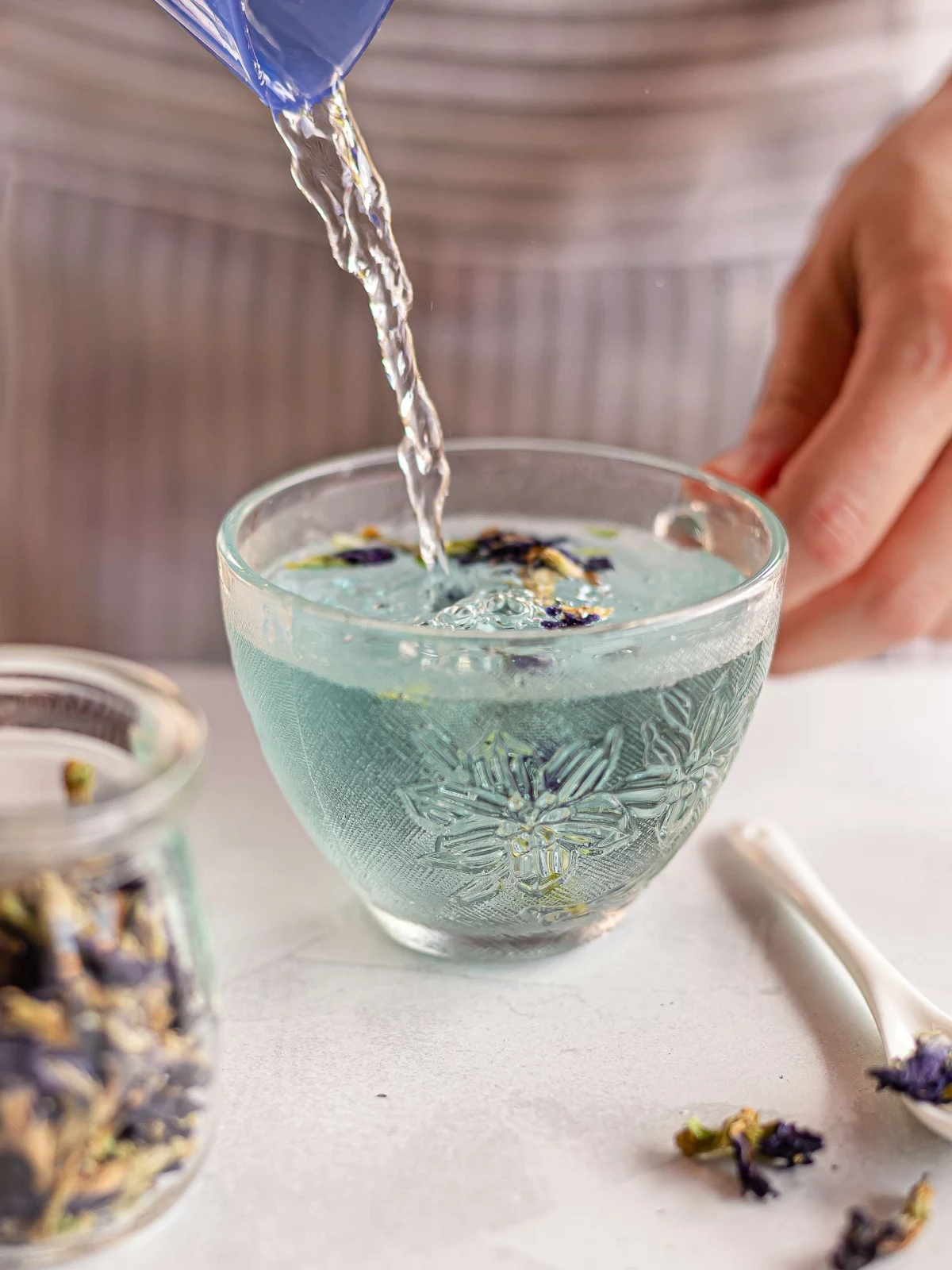
First Things First: Finding and Storing Your Flowers
Before you can use it, you’ve got to buy it. And honestly, knowing what you’re looking for makes all the difference. You’ll typically find butterfly pea in three forms, each with its own pros and cons.
- Dried Whole Flowers: This is the most common form you’ll find and my personal go-to for infusions. When you’re shopping, look for flowers with a deep, vibrant indigo color. If they look faded, brownish, or dusty, pass on them. Good quality flowers should have mostly intact petals and a faint, earthy, slightly sweet smell. You can find them at most Asian markets, specialty tea shops, or online through retailers like Amazon. Expect to pay somewhere between $5 and $10 for an ounce of high-quality dried flowers, which will last you a long time.
- Fine Powder: This is just the dried flowers ground into a superfine powder. It’s fantastic for mixing directly into cake batters, smoothies, or icing where you don’t want to add extra liquid. The powder should have a uniform, deep blue-violet hue. Just be aware that it’s much more concentrated, so a little goes a long way.
- Fresh Flowers: These are pretty rare unless you live in a tropical climate or grow them yourself. If you get your hands on some, they offer a really clean, delicate flavor and are perfect for garnishes or immediate use.
Heads up on storage: Once you get your flowers or powder home, the key is to protect them from light and moisture, which will degrade the color. Store them in an airtight container (a glass jar with a good seal is perfect) in a cool, dark pantry. Stored this way, dried flowers and powder will easily keep their potency for over a year.
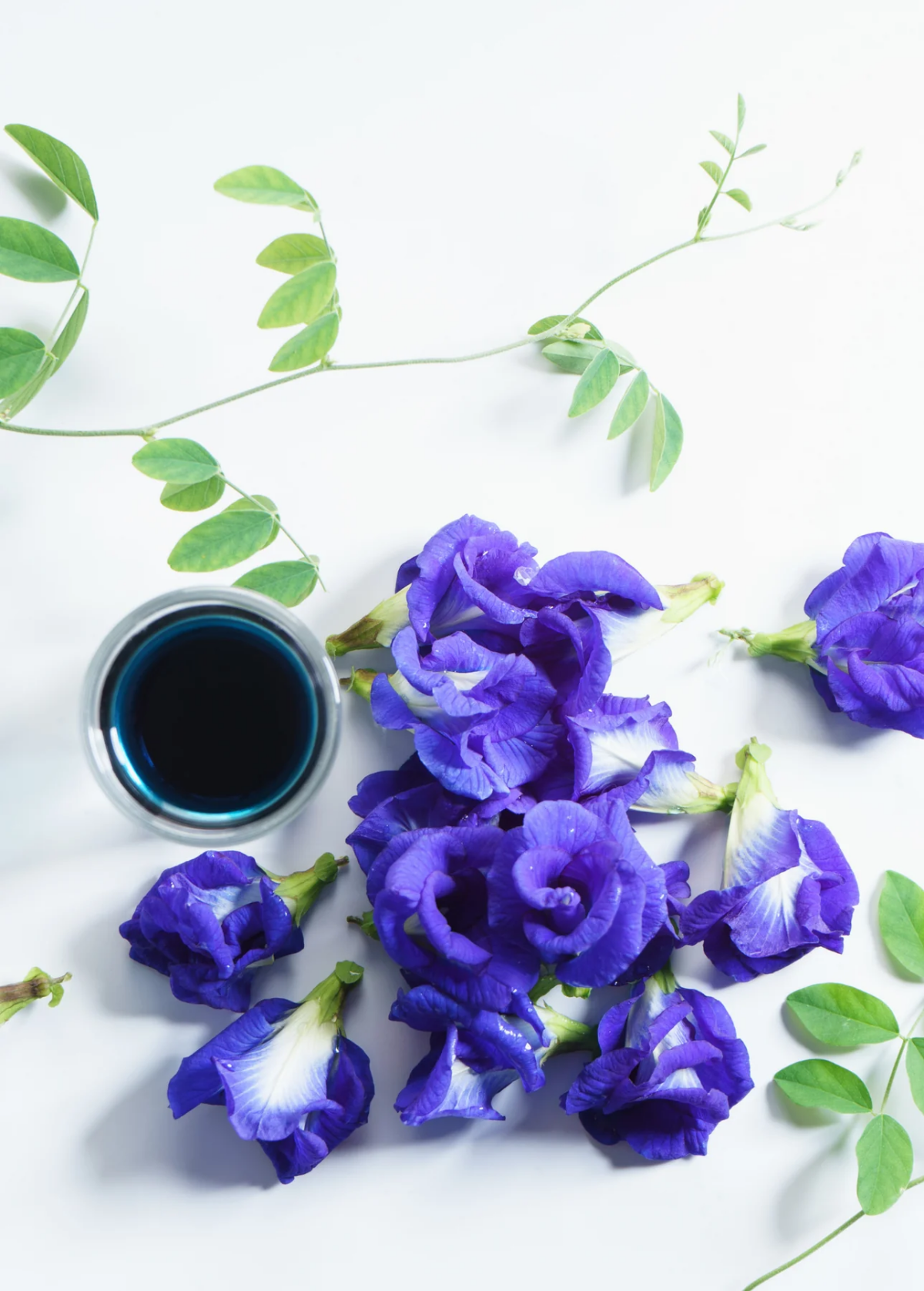
The Art of Extraction: Getting That Incredible Color
How you get the color out of the flower is the most important step. Your goal is to get the most vibrant blue with the cleanest flavor. The taste of butterfly pea itself is very subtle and earthy, a bit like a light, unsweetened green tea. It won’t overpower the other flavors in your recipe, which is a huge plus.
Hot Infusion (The Quick Method)
This is the standard way to make a tea or a liquid base for a recipe. But a heads-up: temperature matters. Use water that’s hot but not at a full, rolling boil—around 195-205°F (90-95°C) is the sweet spot. Boiling water can pull out some of the more bitter, grassy flavors. A good starting point is about 5-7 dried flowers per cup of water. Let it steep for 5 to 7 minutes, and you’ll see the water turn a brilliant sapphire. Strain it right away; any longer, and the flavor can get a bit hay-like.
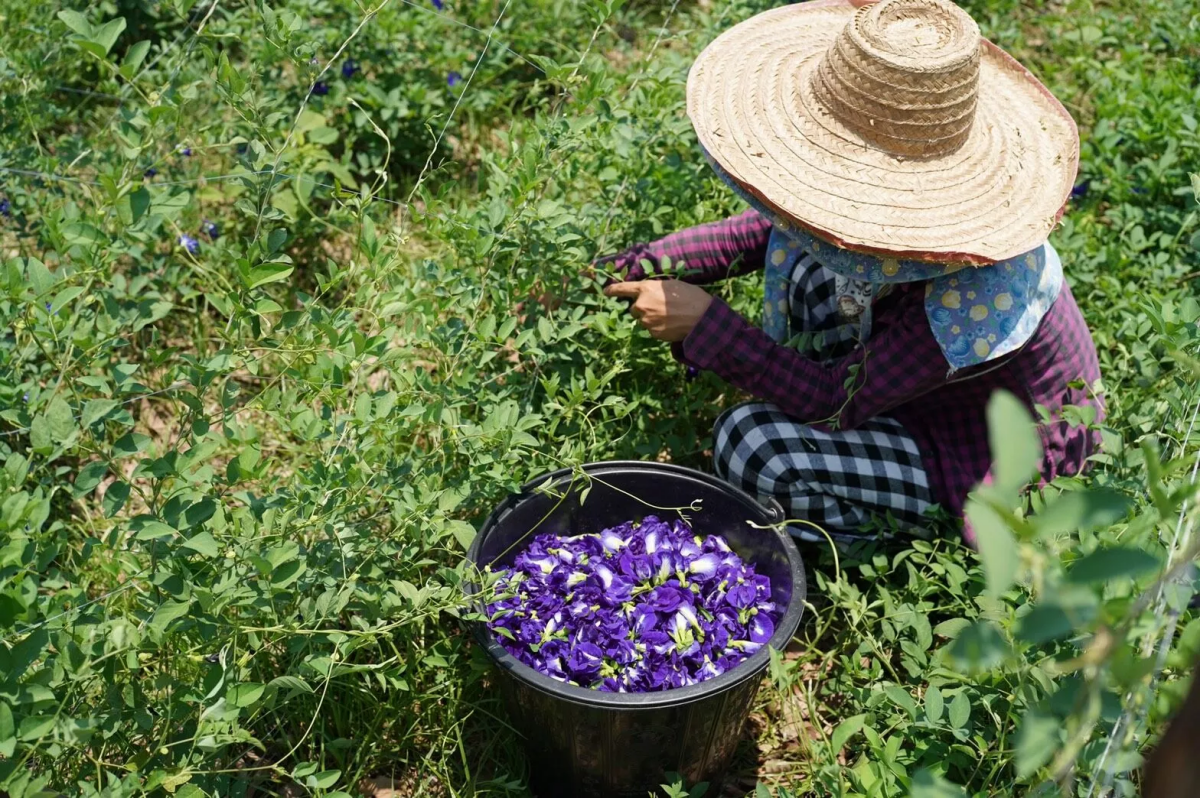
Cold Infusion (The Pro’s Choice)
To be frank, this is my preferred method for drinks and delicate desserts. It takes more time, but the result is a much smoother, more refined flavor with zero bitterness. Simply combine about 10-12 dried flowers per cup of cold, filtered water in a sealed glass jar. Pop it in the fridge for at least 8 hours, or even up to 12. The water will slowly turn an inky, deep blue. It’s perfect for cocktails where you want pure color without any competing flavor notes.
Making a Super-Concentrate
Ever wonder how chefs color icing or pasta without making it watery? They use a concentrate. This is a game-changer. Make a very strong hot infusion using a ratio of about 1 part flowers to 4 parts water (say, 1 cup of flowers to 4 cups of water). Let it steep for 10 minutes, then strain it, really pressing on the flowers to get every last drop of liquid. Pour this into a saucepan and let it simmer gently over low heat for 30-45 minutes, or until it has reduced by about half. You’ll be left with a thick, syrupy, and intensely colored liquid. Once cool, you can store it in a bottle in the fridge for a couple of weeks. A few drops are all you need!
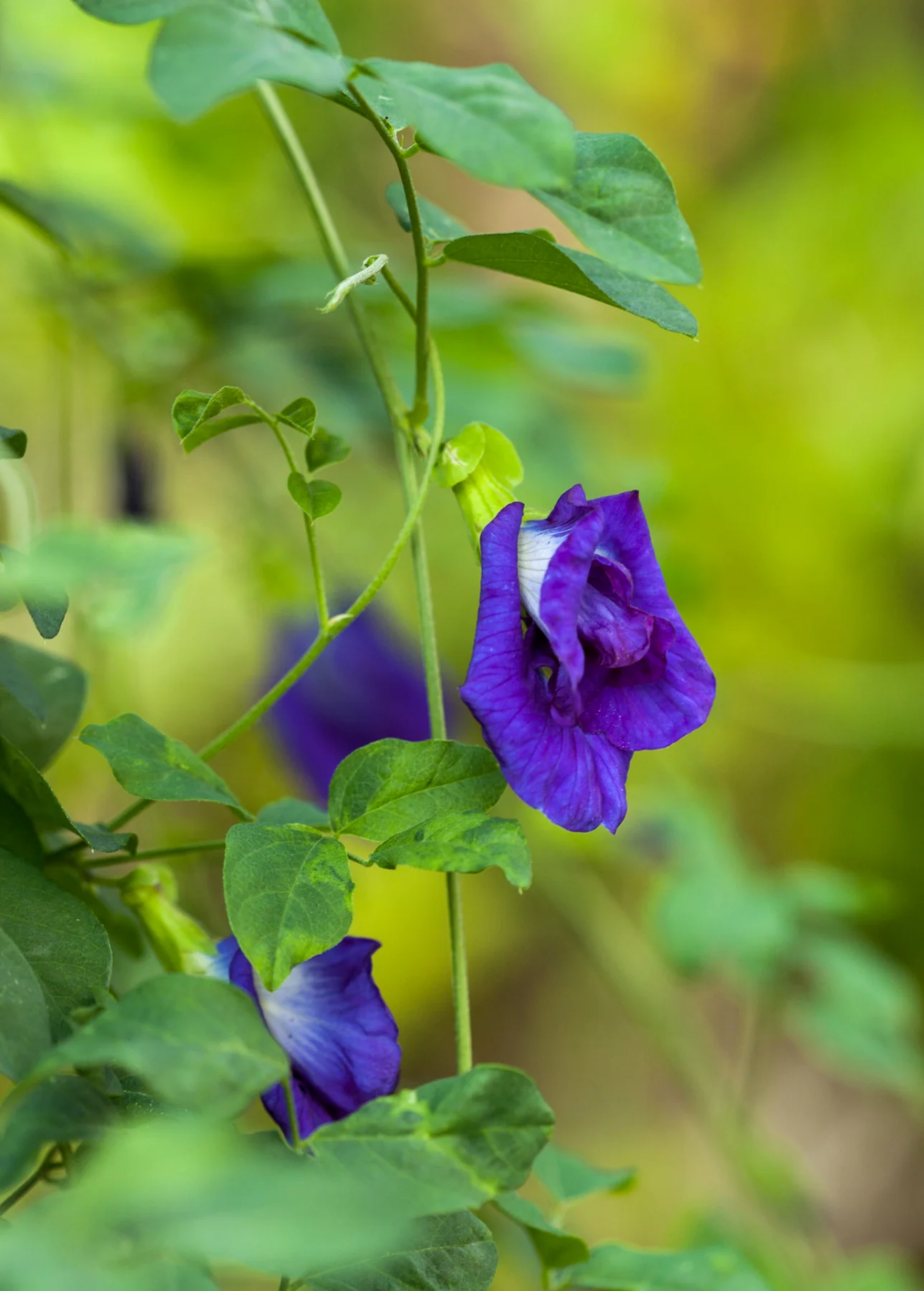
Creative Ways to Use It in the Kitchen
Now for the fun part. Here are some reliable ways to apply these techniques.
- For Incredible Drinks: A balanced butterfly pea lemonade is a showstopper. Start with your strong cold brew. For a 1-liter batch, mix about 2 cups of the infusion with 2 cups of cold water. Sweeten it to taste with a simple syrup (made by dissolving equal parts sugar and water). Serve it over ice and provide a small pitcher of lemon juice on the side. When your guests add a splash of lemon, they get to see the color change from blue to pink right before their eyes.
- For Baking: The powder is your best friend here. Add 1 to 2 teaspoons to a standard cake batter or batch of cookies for a lovely violet hue. A word of caution: the final color can be a bit unpredictable. Ingredients like buttermilk (acidic) or baking soda (alkaline) will react with the color.
- For Cooking Rice: To make stunning blue rice, like the traditional nasi kerabu, just replace some of the cooking water with a strong hot infusion of the flowers. The color holds up beautifully during steaming.
- For Frostings and Icings: This is where that liquid concentrate you made comes in handy. You can add intense color without thinning out your frosting. Add it drop by drop until you get the perfect shade of blue. Want purple or pink? Just mix in a tiny amount of lemon juice after you’ve added the concentrate.
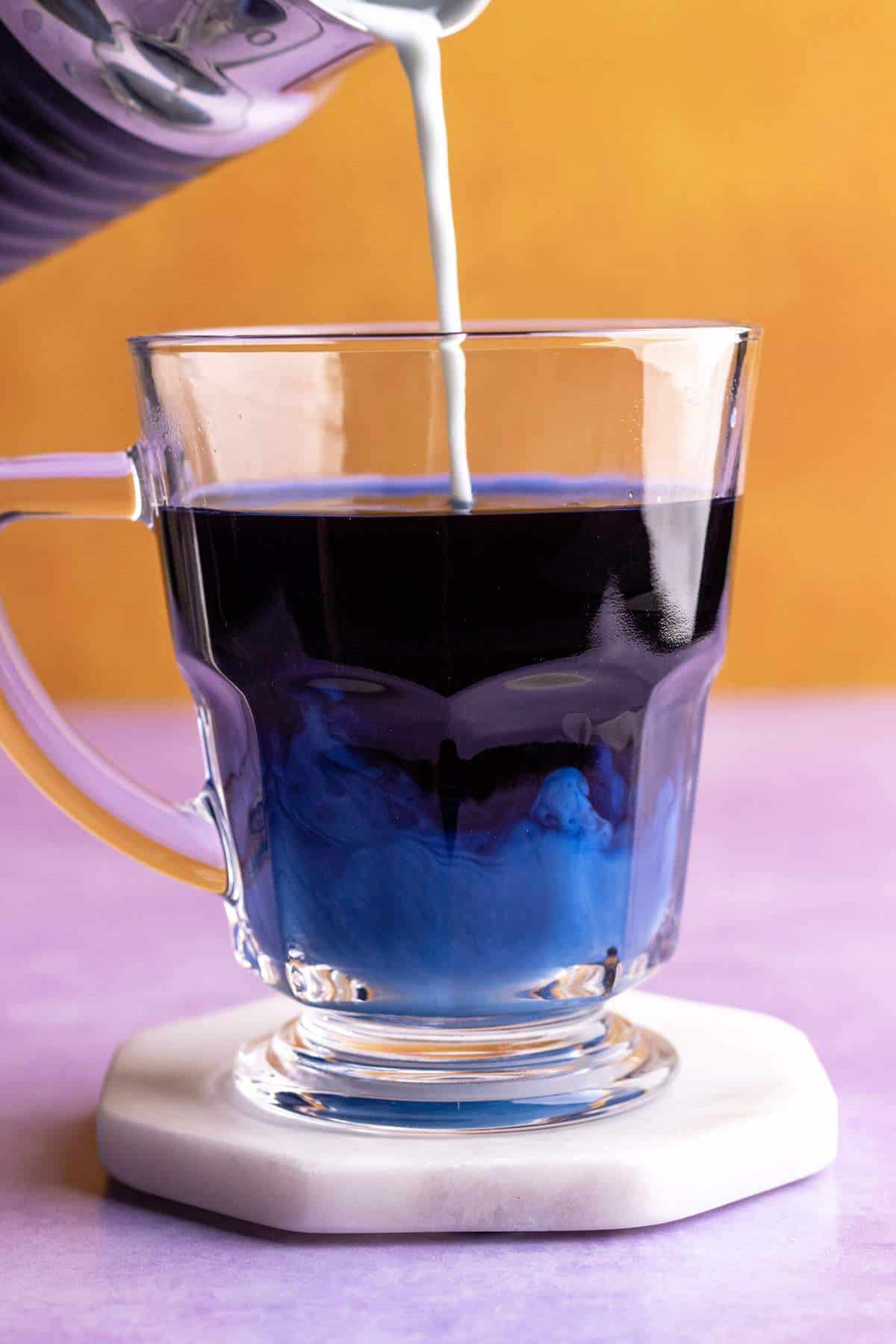
Troubleshooting Common Problems
Things don’t always go perfectly, but most issues are an easy fix.
Problem: My tea tastes grassy or bitter.
This almost always means your water was too hot or you steeped it for too long. Try again with water just off the boil and pull the flowers out after 5 minutes. Or better yet, switch to the cold brew method for a foolproof clean flavor.
Problem: The blue color looks weak or grayish.
This is usually due to one of three things: low-quality flowers, not using enough flowers, or using very hard tap water. Make sure you’re buying vibrant, deep-colored flowers. If that’s not it, try increasing the flower-to-water ratio. Using filtered water can also make a big difference.
Problem: My beautiful blue cake batter turned a murky green in the oven.
Ah, yes. The classic baking chemistry lesson. Trust me, I’ve been there. I once tried to make a gorgeous blue artisan bread and ended up with something that looked… swampy. I completely forgot that the baking soda in the recipe is alkaline and would react with the color. It happens! This is why a small test batch is your best friend. You can sometimes counteract it with a bit of acid (like cream of tartar), but it’s tricky. Often, it’s easier to find a recipe that uses baking powder, which is more pH-neutral.
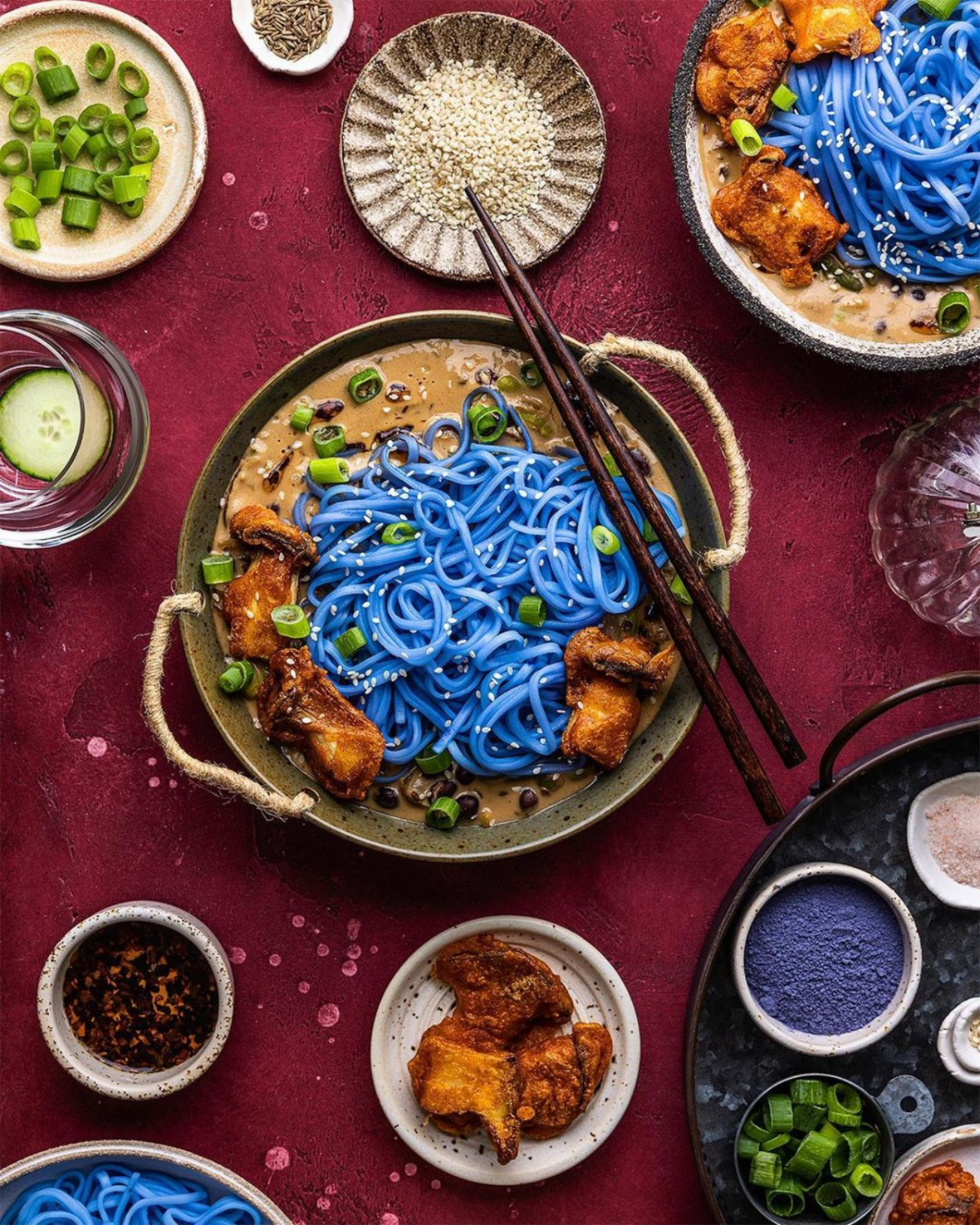
A Quick Note on Safety
Butterfly pea flower is widely considered a safe food ingredient. In fact, it’s officially recognized as a natural food colorant in the U.S. and other regions, which is great for its use in commercial products. However, as with any herbal product, it’s always wise for pregnant or nursing women, or anyone with a serious medical condition, to check with a healthcare professional before using it.
Oh, and one last thing: because it’s technically a legume, people with severe allergies to other legumes (like soy or peanuts) might want to be cautious, though reactions are very rare. When in doubt, start small. This flower is a fantastic tool, and by understanding its properties, you can move beyond the novelty and really unlock its potential in your own cooking.
Galerie d’inspiration
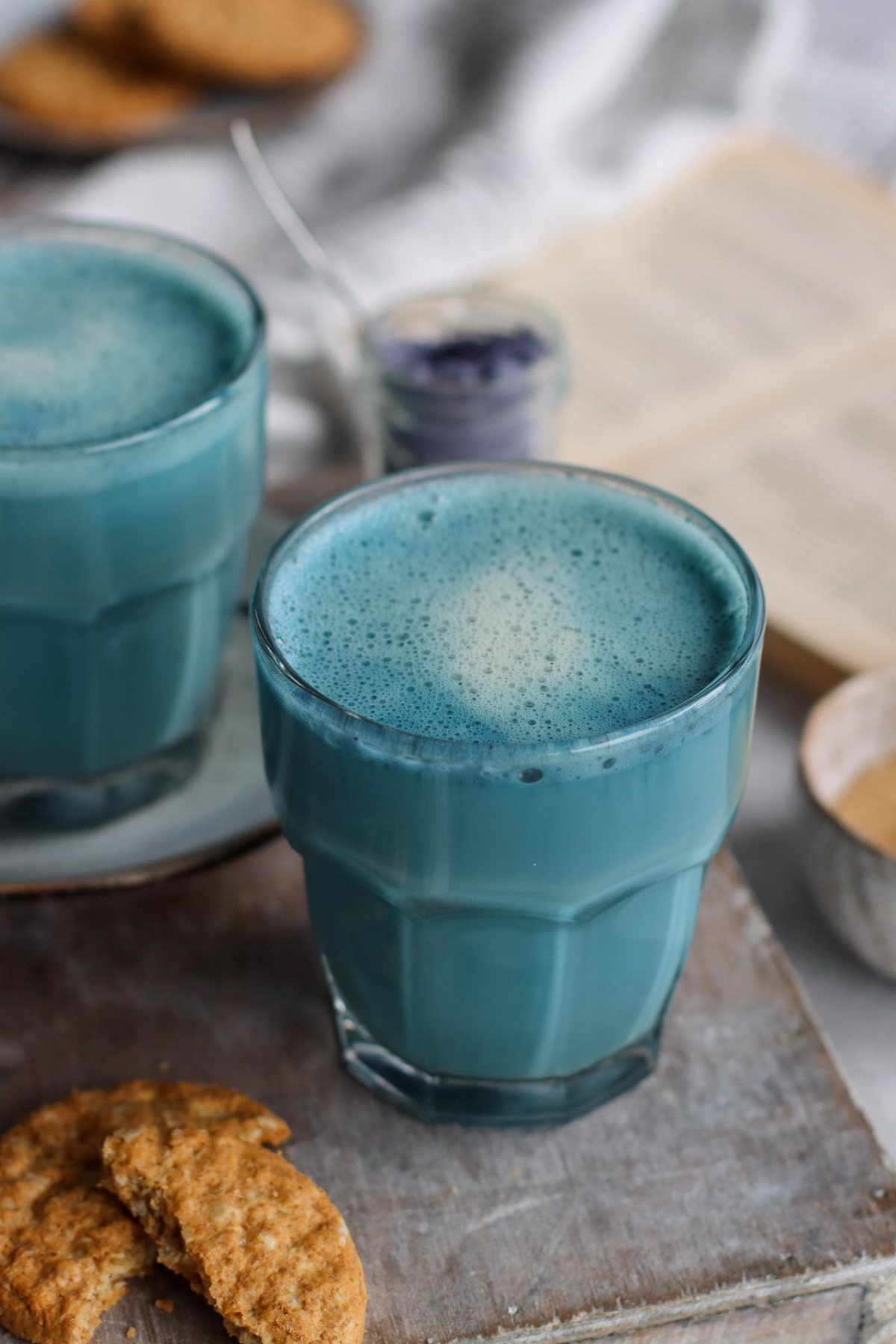

What does it actually taste like? Despite its dramatic color, butterfly pea flower has a surprisingly subtle flavor. On its own, it’s very mild and earthy, often compared to a light, unsweetened green tea or a faint hint of cooked legumes. This is its secret weapon in cooking and mixology: it provides spectacular color without overpowering the primary flavors of your dish or drink.
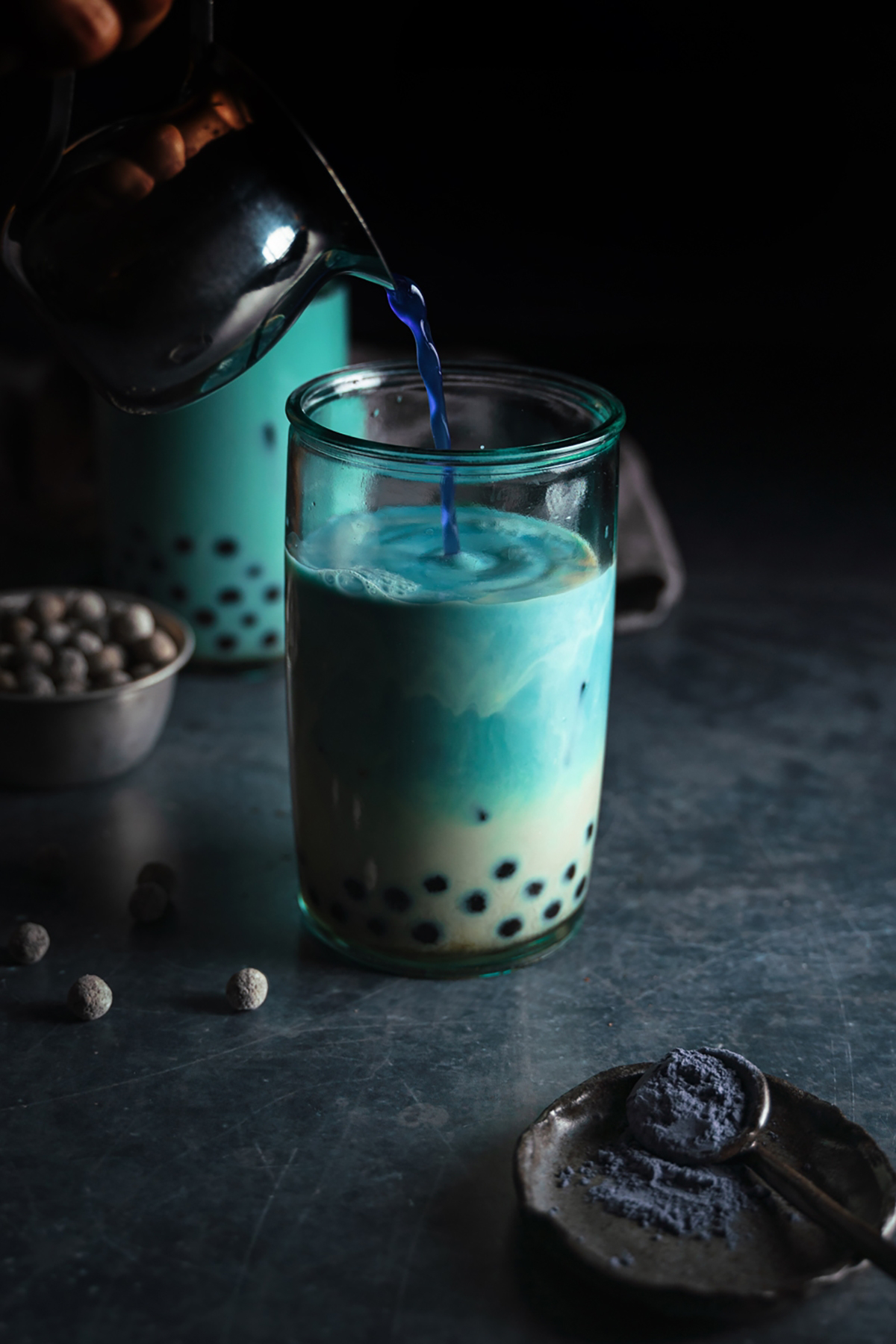
In Malaysia, butterfly pea flower is the star ingredient in Nasi Kerabu, a traditional blue rice dish. The flowers are boiled to create a natural blue dye, which is then used to cook the rice, giving it a signature marbled blue appearance.
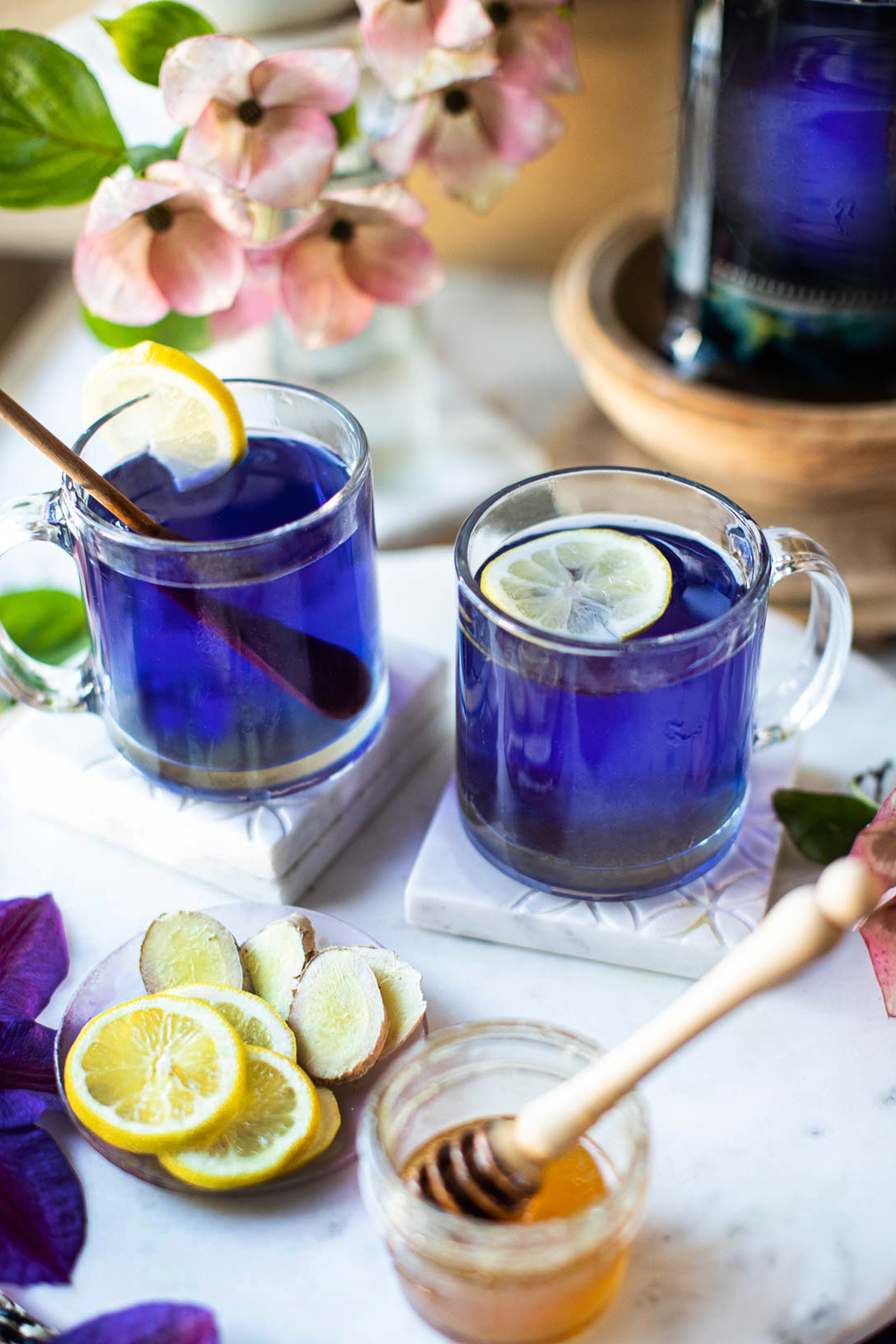
Create stunning ‘Cosmic Ice Cubes’ for your next gathering. They’re a simple way to elevate any clear beverage, from gin and tonics to sparkling water.
- Steep a strong infusion of butterfly pea flowers in hot water and let it cool completely.
- Fill an ice cube tray halfway with the blue infusion and freeze until solid.
- Add a second layer of plain water or, for a color-swirl effect, water with a few drops of lemon juice (which will turn pink/purple). Freeze again.
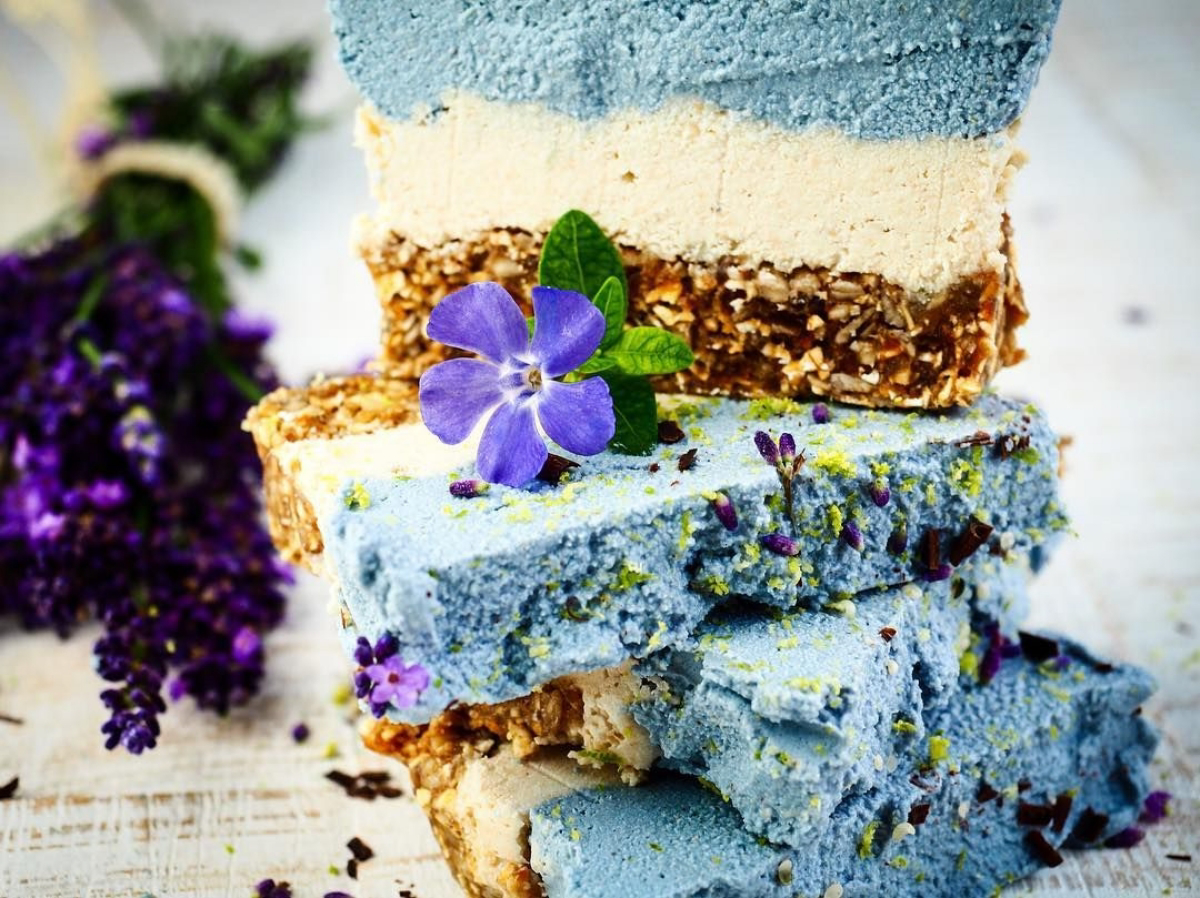
My blue infusion looks dull or greenish. What went wrong?
This is usually due to the pH of your water. Highly alkaline or mineral-rich tap water can mute the blue tones, sometimes shifting them towards green. For the most vibrant, pure blue, try using filtered or distilled water for your infusion. Water temperature also matters; using water that is just off the boil (around 195°F or 90°C) extracts the color beautifully without scalding the delicate petals.
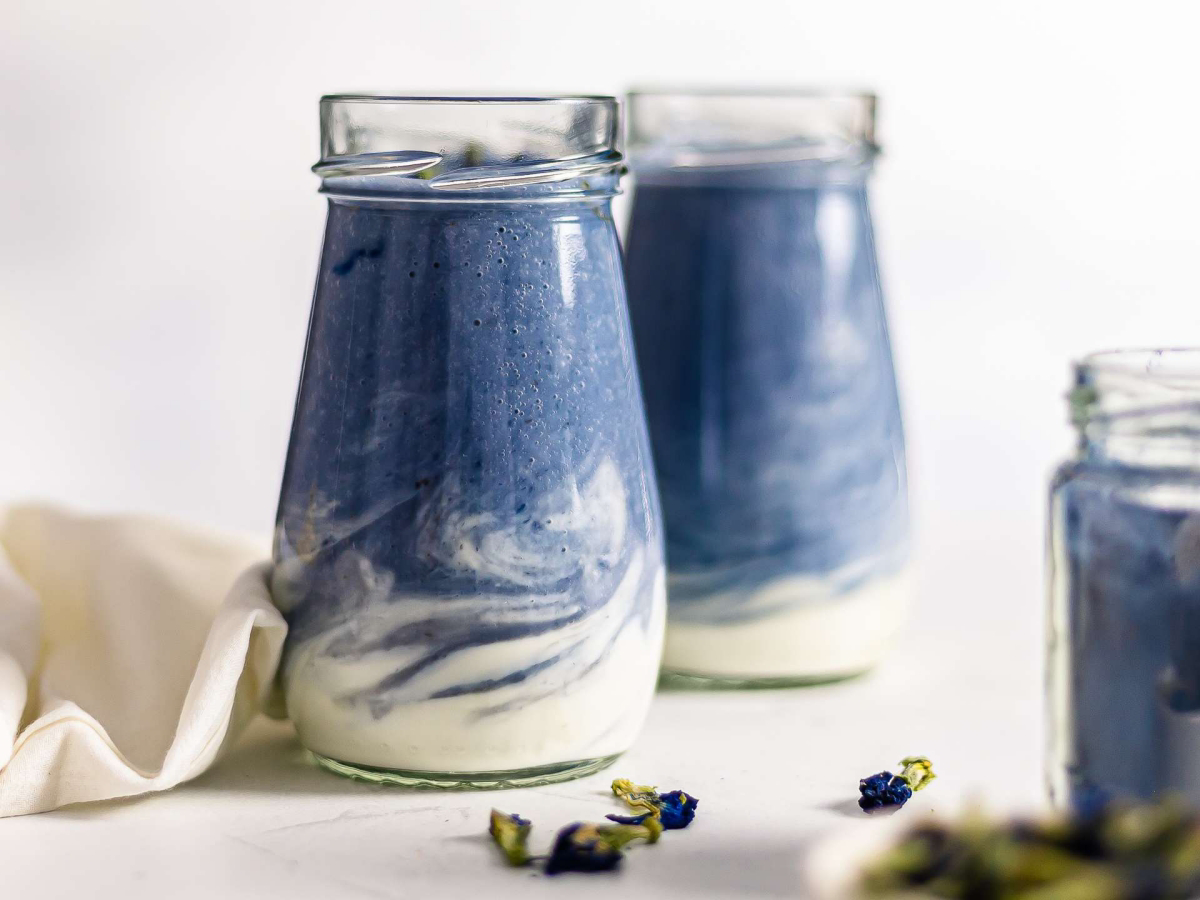
- Creates a stable, natural blue hue without adding unwanted flavors.
- Offers a ‘wow’ factor with pH-triggered color changes.
- Dissolves easily for smooth, speckle-free lattes and cocktails.
The secret? High-end butterfly pea flower is now the go-to natural colorant for professional baristas and mixologists looking to avoid artificial dyes.
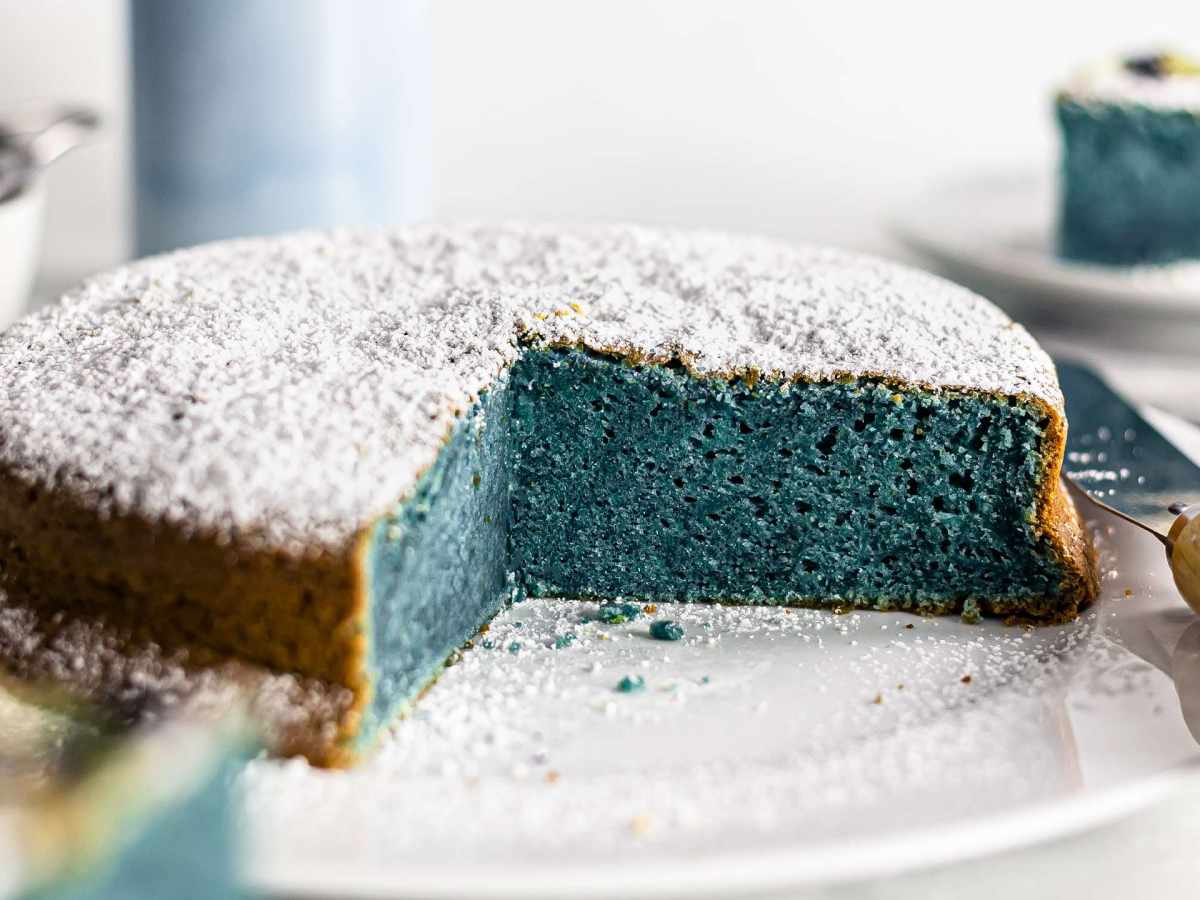
Beyond the kitchen, the flower’s powerful pigment makes it an excellent natural dye for fabrics. To create a dye bath, simmer a large quantity of dried flowers in a pot of water for about an hour. After straining out the solids, you can dye natural fibers like cotton, silk, or wool. The resulting color is a beautiful, moody blue-gray that can be shifted to purple with a vinegar rinse.
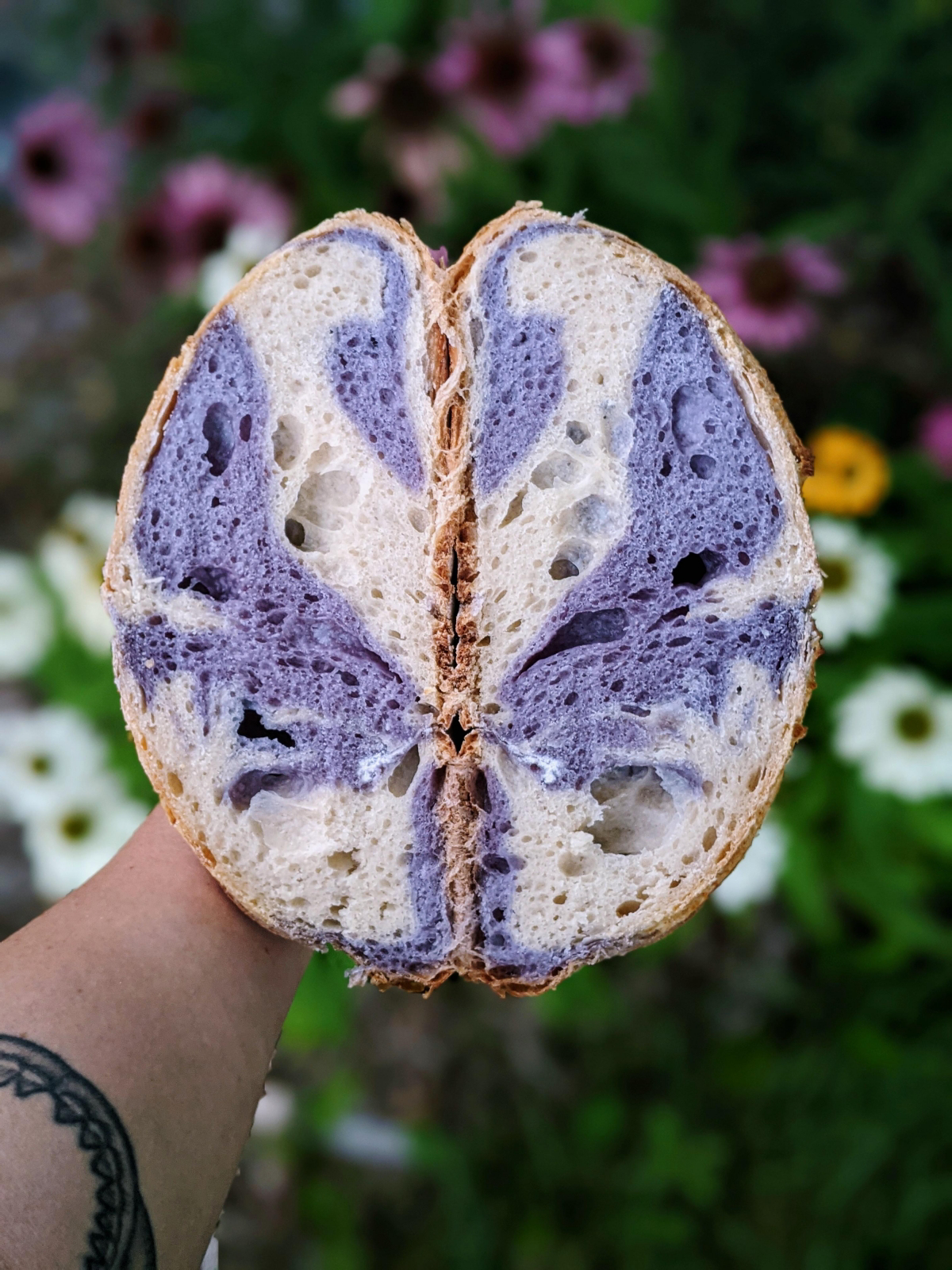
Powder: Best for incorporating directly into batters, doughs, or smoothies. A high-quality powder, like those from Suncore Foods, provides intense, uniform color without adding liquid. It’s the ideal choice for blue velvet cakes or colored frostings.
Whole Flowers: Perfect for infusions, teas, and syrups. Steeping the flowers releases the color more gently and allows you to strain them out, resulting in a crystal-clear, brilliantly colored liquid essential for cocktails and clear jellies.
For visual impact, use the infusion; for colored solids, use the powder.
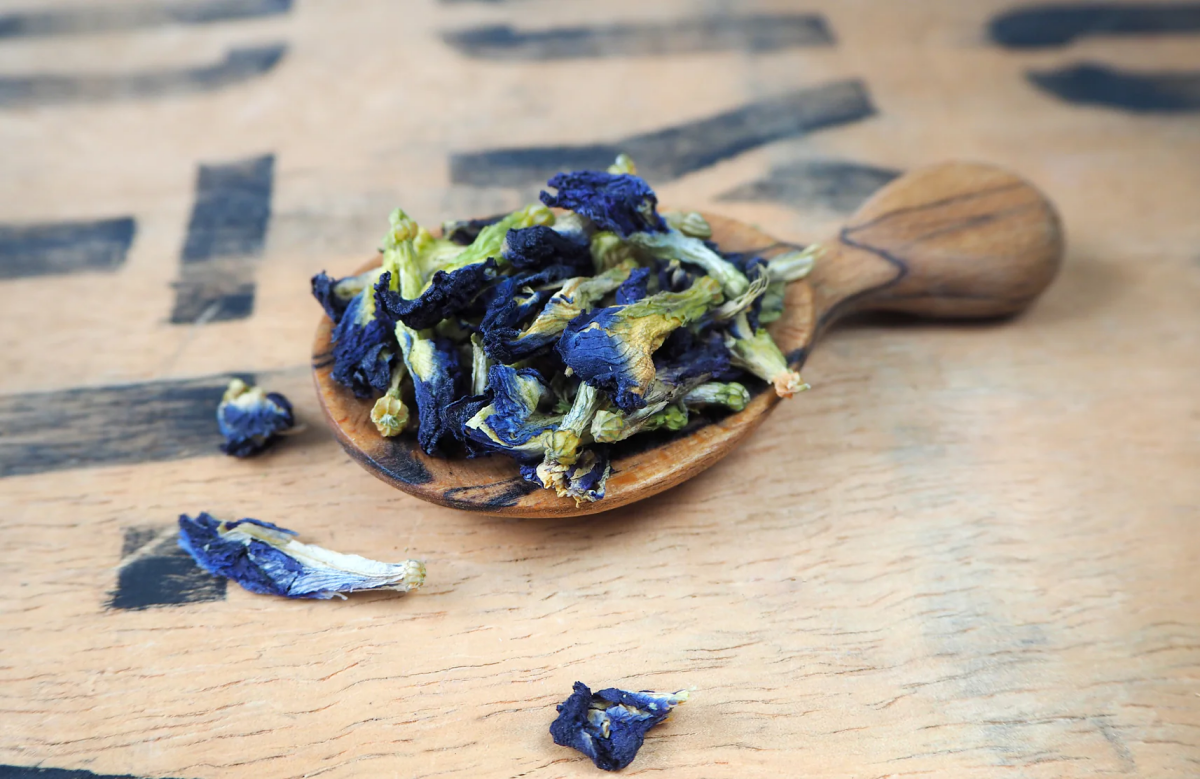
Did you know? The butterfly pea plant (Clitoria ternatea) is a legume that engages in nitrogen fixation.
This means it partners with bacteria in the soil to convert atmospheric nitrogen into a form that plants can use. Growing it in your garden not only provides you with fresh flowers but also naturally enriches the soil, benefiting neighboring plants. It’s a beautiful and functional addition to any sustainable garden.
- Gently press a fresh or rehydrated flower onto the foam of a latte or cocktail.
- Freeze small, whole flowers inside ice cubes for a stunning visual effect.
- Candy the fresh flowers by brushing them with egg white, sprinkling with superfine sugar, and letting them dry until crisp.
- Finely chop the petals and sprinkle them over salads or rice for a touch of color confetti.










